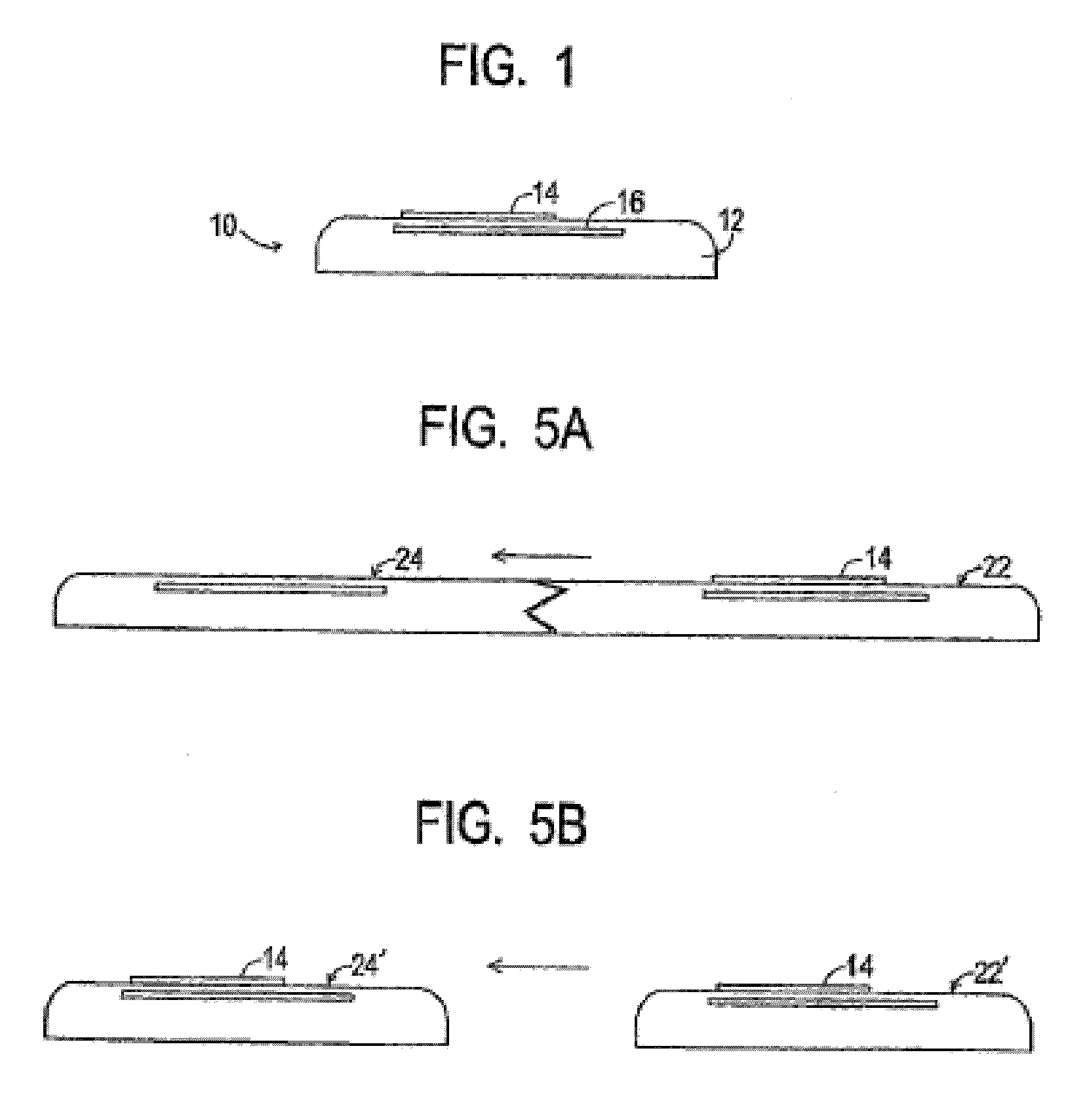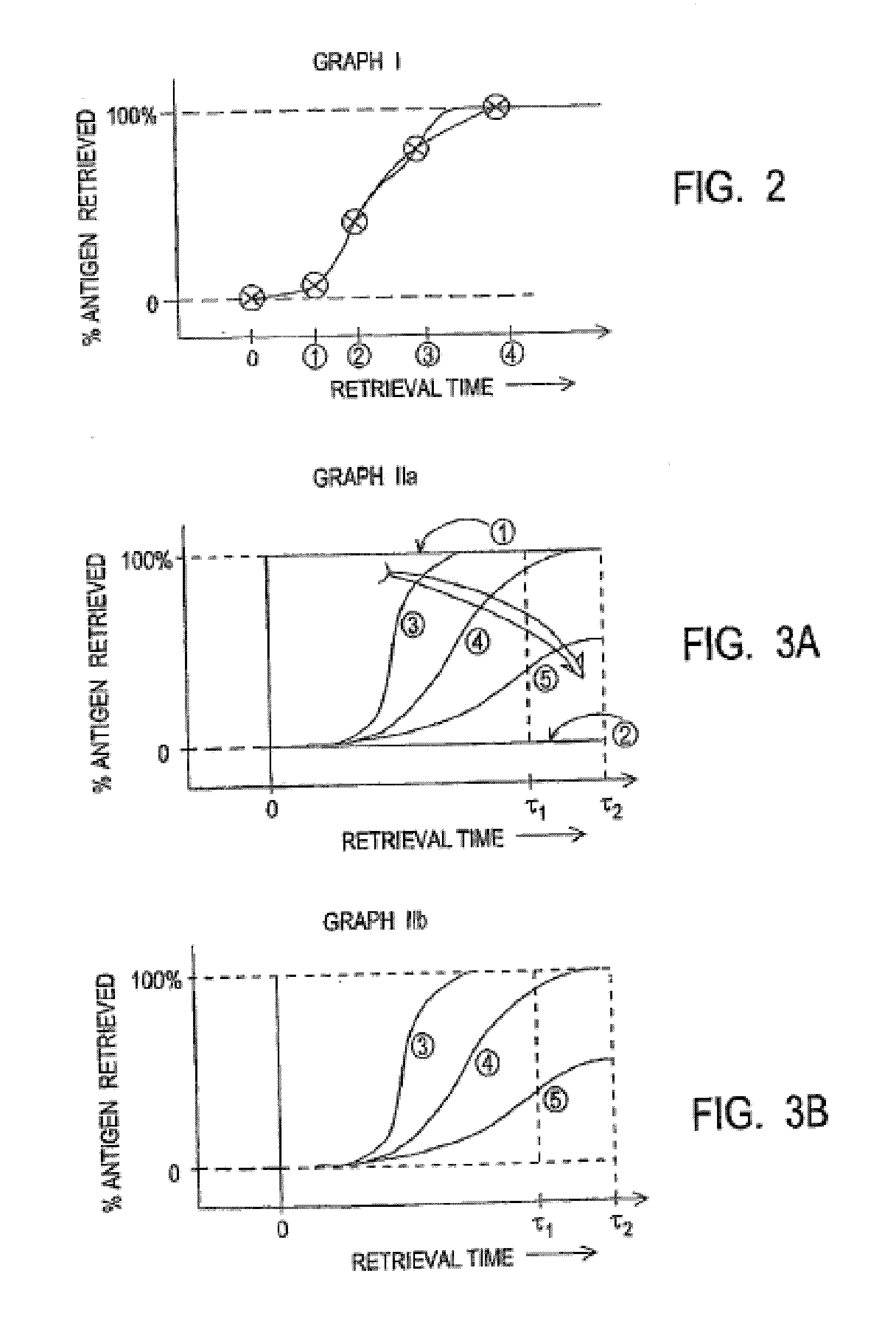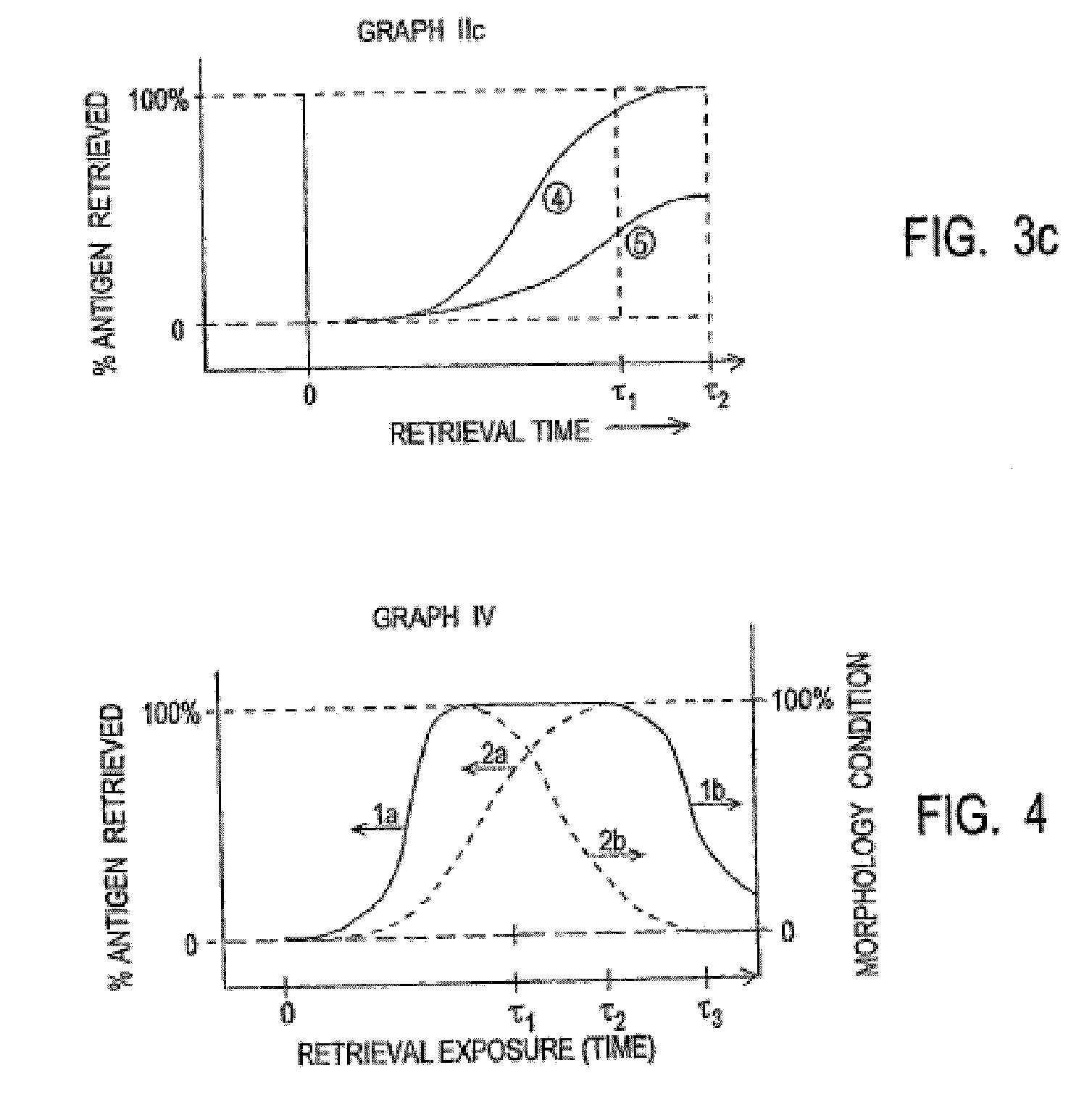Tissue Conditioning Protocols
a tissue and conditioning technology, applied in the field of tissue conditioning protocols, can solve the problems of increasing the analysis cost and exposure risk associated with each tissue sample tested, affecting the use of diagnostics, and rapidly deteriorating tissue samples, so as to prevent tissue exposure, and reduce the risk of ihc and ish integration
- Summary
- Abstract
- Description
- Claims
- Application Information
AI Technical Summary
Benefits of technology
Problems solved by technology
Method used
Image
Examples
example 1
Ki67 on Tonsil on DISCOVERY® Autostainer Using Automated Antigen Retrieval
[0077]Tissue Block A contained a piece of paraffin-embedded, neutral-buffered, formalin fixed human tonsil. The block was micro-sectioned in approximately 4-micron thick sections, one section mounted per slide for ˜200 slides provided for testing. Tissue cross section diameter was approximately 1.0 cm. Slides had been stored for a minimum of ˜1 month and so were effectively dried and adhered to the glass. Slides were de-waxed off-line in xylenes and graded alcohols and thoroughly rinsed with de-ionized water. Antigen Ki-67 was selected for testing retrieval characteristics because it is known to be masked by formalin fixation. Hematoxylin counterstain was selected to improve visualization of tissue morphology. The following reagents were all obtained from Ventana Medical Systems, Inc., Tucson, Ariz.: Antibody CONFIRM™ anti-Ki67 (K-2 clone) catalogue #790-29 10; DAB MAP™ Kit cat #760-124; Universal Secondary An...
example 2
Time Dependence of Antigen Retrieval
[0080]Tissue Block B contained a piece of paraffin-embedded, neutral-buffered, formalin-fixed human tonsil. Four slides each with a single tissue section were run at various conditions of antigen retrieval processing with nominal set point reaction temperature of 100 C: “Short”, “Mild”, “Standard”, and “Extended” protocols. All four protocols began with the same heat ramp processing taking ˜18 minutes. Short tissue conditioning total time was 24 minutes; Mild was 42 minutes; Standard was 72 minutes; and Extended was 102 minutes. Each condition therefore progressively exposed the tissue sample to greater antigen retrieval reaction times. Table 1, below illustrates the effect of retrieval time on observable stain intensity. Greater exposure time during antigen retrieval processes increases the degree of antigen retrieval as measured by observable detection, illustrated in Graph I as shown in FIG. 2.
TABLE 1Exposure ConditionStain intensityShort (24 m...
example 3
Temperature Dependence of Antigen Retrieval
[0082]Tissue Blocks B and C each contained a piece of paraffin-embedded, neutral-buffered, formalin fixed human tonsil. One slide each was stained using standard tissue conditioning and an additional slide was stained using the same protocol except that the tissue conditioning temperature was changed to 95 degrees C. and 90 degrees C. Results are reported in Table 2, below.
TABLE 2TemperatureStain Intensity -Stain Intensity -deg C.Tissue CTissue B100darkmedium95darklight90mediumfaint
[0083]Tissue B required greater retrieval in order to recover an equivalent amount of antigen signal compared to Tissue C for each of the retrieval processes listed. Tissue morphology was good in all cases.
[0084]Three various retrieval processes are illustrated in Table 2, above differentiated by process temperature with various staining intensity results. Higher temperature provided greater antigen retrieval. Graph IIb (FIG. 3b) illustrates this temperature effe...
PUM
 Login to View More
Login to View More Abstract
Description
Claims
Application Information
 Login to View More
Login to View More - R&D
- Intellectual Property
- Life Sciences
- Materials
- Tech Scout
- Unparalleled Data Quality
- Higher Quality Content
- 60% Fewer Hallucinations
Browse by: Latest US Patents, China's latest patents, Technical Efficacy Thesaurus, Application Domain, Technology Topic, Popular Technical Reports.
© 2025 PatSnap. All rights reserved.Legal|Privacy policy|Modern Slavery Act Transparency Statement|Sitemap|About US| Contact US: help@patsnap.com



